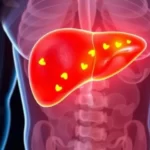Pakistan presents a high risk for infectious diseases, particularly for international travelers and expatriates. Understanding the types, transmission routes, and preventive strategies is essential for minimizing health risks.
Due to environmental conditions, limited sanitation infrastructure, and a tropical climate, Pakistan faces a significant burden of communicable Infectious Diseases. These Infectious Diseases can pose serious health risks to short- and long-term visitors if preventive measures are not taken.
Food and Waterborne Diseases in Pakistan
Contaminated water and unhygienic food sources are leading causes of illness in Pakistan. These Infectious Diseases are prevalent in rural areas and urban slums with poor sewage and waste disposal systems.
Examples include:
- Hepatitis A is Common in areas with poor sanitation; it is spread via contaminated food or water.
- Hepatitis E is more prevalent in areas with tainted drinking water.
- Typhoid Fever: A severe bacterial infection often linked to fecal contamination.
- Bacterial Diarrhea is often caused by E. coli or other pathogens in food and water.
Vectorborne Diseases in Pakistan
Mosquito- and tick-borne diseases are a significant public health challenge in Pakistan, particularly during the monsoon and post-monsoon seasons. The hot, humid climate combined with poor drainage and stagnant water in cities like Karachi, Lahore, and Islamabad creates ideal breeding grounds for disease-carrying vectors such as Aedes, Anopheles, and Ixodes species.
High-risk periods for vectorborne illnesses occur from July to October, and infections spike in areas with low mosquito control efforts. Travelers who stay in rural villages or flood-affected regions are particularly at risk.
Major Vectorborne Diseases:
- Malaria: Endemic in interior Sindh, Balochistan, and parts of rural Punjab. Transmitted by Anopheles mosquitoes, it can cause recurring fever, chills, and even organ complications if untreated.
- Dengue Fever: A rapidly increasing urban threat due to Aedes aegypti mosquitoes. Seasonal outbreaks cause widespread illness, leading to high fever, severe muscle pain, and internal bleeding in severe cases.
- Crimean-Congo Hemorrhagic Fever (CCHF): Spread through tick bites and contact with infected livestock. It poses a serious risk to farmers, abattoir workers, and those attending traditional Eid animal markets.
- Chikungunya: Causing fever, rash, and debilitating joint pain. Though rarely fatal, it can significantly impact mobility for weeks.
Animal Contact Diseases
Pakistan’s high population of stray animals, especially dogs, increases the risk of zoonotic Infectious Diseases. Many of these animals are unvaccinated and may carry deadly viruses.
Primary Concern:
- Rabies: Endemic across Pakistan, with thousands of dog bite cases reported annually. The virus is nearly always fatal once symptoms begin. Children are particularly vulnerable due to their frequent interaction with animals and smaller body size.
Travelers are advised to:
- Avoid petting stray animals.
- Seek immediate medical care and post-exposure prophylaxis after any animal bite or scratch.
- Consider pre-travel rabies vaccination, especially if staying long-term or in rural areas.
Water Contact Diseases
Rivers, ponds, and other freshwater bodies in Pakistan may be contaminated with human or animal waste, especially after flooding or during water shortages. Swimming, bathing, or wading through such water can expose travelers to dangerous pathogens.
Notable Waterborne Infections:
- Leptospirosis: Caused by Leptospira bacteria found in the urine of infected animals. Infection may occur through cuts or mucous membranes when in contact with contaminated water, leading to high fever, liver damage, or meningitis.
- Parasitic flatworms in infested freshwater transmit schistosomiasis. It can enter through intact skin and lead to chronic urinary or intestinal issues.
Respiratory and Aerosolized Diseases
Pakistan’s densely populated cities, combined with inadequate ventilation in homes and public transport, contribute to the easy transmission of airborne and respiratory Infectious Diseases. Travelers on buses, in hostels, or at crowded events may be exposed unknowingly.
Key Risks:
- Meningococcal Meningitis: A bacterial infection that spreads via coughing, sneezing, or close contact. Symptoms like fever, headache, and stiff neck can develop rapidly and may be fatal without urgent treatment.
- Lassa Fever: Though not endemic, cross-border travel from affected regions poses a potential risk. It’s spread via rodent excreta and can become aerosolized in contaminated environments.
Zoonotic and Avian Influenza Risks in Pakistan
Although human Infectious Diseases with zoonotic and avian influenza viruses are uncommon in Pakistan, the potential for transmission exists, particularly among those in close contact with live poultry or wild birds. The country has reported periodic outbreaks of highly pathogenic avian influenza (H5N1) in birds, particularly in live bird markets and backyard farms where biosecurity measures are minimal.
Travelers working in agriculture, visiting poultry farms, or shopping in wet markets are at a higher risk, mainly if proper precautions like gloves or face masks are not used. These environments may harbor infected birds that shed the virus through secretions and feces, which can contaminate surfaces or enter the air in enclosed, poorly ventilated spaces.
While H5N1 transmission to humans is rare, when it does occur, it can lead to severe respiratory illness with high mortality. Symptoms often begin like the flu but can quickly progress to pneumonia or multi-organ failure if untreated.
To reduce risk, travelers are advised to:
- Avoid handling live birds or poultry.
- Stay away from bird markets or farms, especially during outbreaks.
- Practice good hand hygiene after any animal exposure.
- Report any flu-like symptoms after bird contact to a healthcare provider immediately.
While zoonotic flu outbreaks are not currently widespread, the potential threat remains, particularly in a country with limited veterinary oversight in rural regions. Vigilance and simple preventive practices can significantly lower exposure risk
Risk Factors for Travelers to Pakistan
The risk of contracting infectious diseases in Pakistan is not uniform and depends significantly on the traveler’s circumstances, geographic exposure, duration of stay, and adherence to hygiene practices.
Travelers venturing into rural areas or flood-affected regions are particularly vulnerable due to the lack of access to clean drinking water, poor sanitation infrastructure, and limited availability of healthcare services. These regions often experience higher rates of malaria, typhoid, and diarrheal illnesses, especially during and after the monsoon season.
Street food consumption poses another serious risk, especially in urban settings like Karachi, Lahore, and Rawalpindi. Many food vendors operate without proper licensing or hygiene protocols, increasing the likelihood of contamination with bacteria such as Salmonella, Shigella, and E. coli.
Travelers who forego recommended vaccinations or arrive without basic preventive care, such as hepatitis A, typhoid, or tetanus shots, face a disproportionately higher risk. This is especially true for long-term visitors, aid workers, or those staying with local families.
Those engaging in outdoor activities, such as hiking or visiting livestock farms, are at greater risk of animal contact or vectorborne diseases, including rabies, leptospirosis, and tick-borne fevers. In addition, air pollution and crowded urban living may exacerbate respiratory conditions and facilitate the spread of airborne Infectious Diseases like tuberculosis or meningococcal meningitis.
Immunocompromised individuals, pregnant women, young children, and the elderly should exercise heightened caution, as their risk of complications from these Infectious Diseases is substantially higher.
Expert Travel Advisory: Preventive Measures
Health experts strongly advise consultation with a travel medicine specialist before entering Pakistan. Preventive actions may include:
- Receiving vaccinations
- Taking malaria prophylaxis
- Avoiding raw foods and unfiltered water
- Wearing insect-repellent clothing
- Avoiding animal interactions and freshwater exposure
Conclusion
Traveling to Pakistan can be a rewarding experience, but it comes with significant health challenges due to the high prevalence of infectious diseases. From food and waterborne illnesses like hepatitis and typhoid to mosquito-borne threats such as malaria and dengue, preventive measures are essential. Vaccinations, proper hygiene, safe food choices, and vector control remain the cornerstone of protection. With awareness, preparation, and timely medical consultation, travelers can minimize risks and enjoy a safe stay in Pakistan.
“So, what’s my final advice? Please don’t be afraid to travel to Pakistan. From my clinical experience, I can tell you that with a little bit of preparation and common sense, you can have a safe and healthy trip. By getting the right vaccinations, being careful with what you eat and drink, and protecting yourself from mosquitoes, you can enjoy all the beauty and hospitality that Pakistan has to offer. Your health is in your hands, and a little bit of planning goes a long way.”
FAQs
What are the most common infectious diseases in Pakistan for travelers?
Common infectious diseases include hepatitis A and E, typhoid fever, bacterial diarrhea, malaria, dengue fever, rabies, and leptospirosis. Risk levels vary based on location, hygiene, and exposure to vectors or animals.
Is it safe to drink tap water in Pakistan?
No, tap water in most parts of Pakistan is not safe for drinking. Travelers should use bottled or adequately filtered water to avoid waterborne illnesses like hepatitis A, E, and bacterial diarrhea.
When is the highest risk season for mosquito-borne diseases in Pakistan?
The risk of mosquito-borne diseases like malaria and dengue peaks during and after the monsoon season (July to October), when standing water facilitates mosquito breeding.
Do I need vaccinations before traveling to Pakistan?
Yes, essential vaccines include hepatitis A, typhoid, tetanus, and polio. Depending on your activities and areas visited, vaccines for rabies, hepatitis B, and meningitis may also be recommended.
Is there a risk of rabies in Pakistan?
Yes, rabies is endemic in Pakistan, especially in areas with large populations of stray dogs. Avoid contact with animals, and seek immediate medical care if bitten or scratched.
Medically Reviewed by Dr. Muhammad Usman
References
World Health Organization (WHO). Pakistan – Infectious disease risks and prevention. https://www.who.int
Centers for Disease Control and Prevention (CDC). Travelers’ Health – Pakistan. https://wwwnc.cdc.gov/travel
National Institute of Health (NIH) Pakistan. Disease Surveillance Reports. https://www.nih.org.pk
World Health Organization. Vector-borne diseases fact sheet. https://www.who.int/news-room/fact-sheets/detail/vector-borne-diseases
World Health Organization. Rabies fact sheet. https://www.who.int/news-room/fact-sheets/detail/rabies
UNICEF Pakistan. Water, Sanitation and Hygiene (WASH) Program. https://www.unicef.org/pakistan











